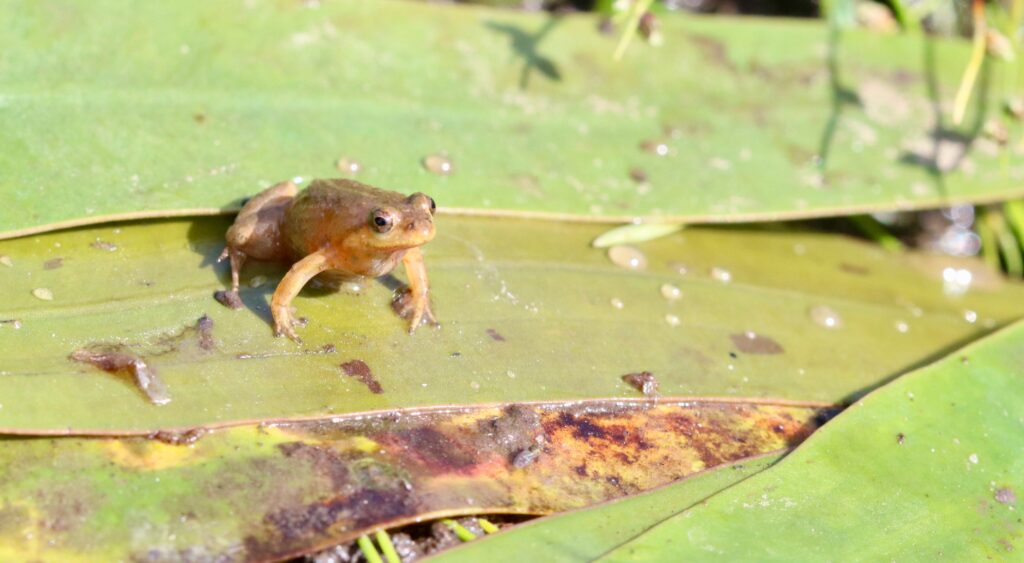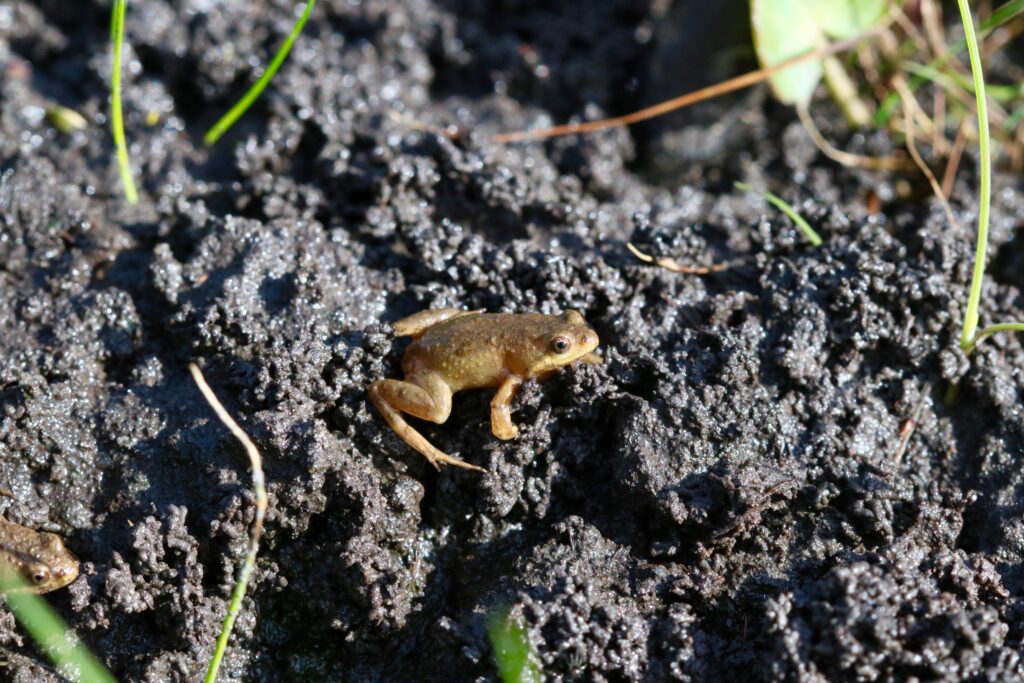Thumbnail: The micro frog, also called the Cape Flats frog, is endemic to a small area in the Western Cape
Conservationists are working hard to determine the number of a recently discovered population of critically endangered micro frogs at the Nuwejaars Wetland Special Management Area near Bredasdorp in the Western Cape.
Because fully grown adult micro frogs — endemic to the southwestern section of the Western Cape — are the size of a thumbnail, the process to determine how many of them are in the wetland will be a mammoth task for the conservationists who were “greatly surprised” by the find.
Scientists had previously estimated that only about 100 adult frogs out of the four subpopulations of these species remained.
They are found between the Cape Flats and the southern tip of Africa. This small area, as well as urbanisation and the expansion of formal agriculture, have also led to the micro frog being critically endangered.

About five of the tiny frogs were first caught by a Stellenbosch University student and 30 more were heard calling, leading to the belief that more of them were in the area.
“We are not sure yet about the number of the recently discovered species but we are going to have to do a survey. We are very optimistic and suspect that we are going to have a bigger population than all the other populations put together, but that is pure speculation at this moment,” said Ross Kettles, the project manager at the Nuwejaars wetlands area.
Invasive plant species such as Australia’s long-leaved wattle (Acacia longiphyllodinea) and Port Jackson (Acacia saligna), which will take years to completely remove from the wetlands, have also contributed to the micro frogs becoming endangered.
But Kettles believes that finding the rare amphibian species in the wetlands is an indication that they are managing the endangered ecosystem well.
“It is indicative that we have a healthy ecosystem because the frogs are right at the bottom of the food chain. It is also healthy for the bird population that eats the frogs and the insects.”
The wetlands were like the “kidneys” of the ecosystem because of their ability to store water and this made them crucial in mitigating the negative effects of climate change, Kettles said.
The team has received support from the partnership between the World Wide Fund for Nature and the Overberg district municipality in its project to rehabilitate wetlands, while the Hans Hoheisen Charitable Trust has done monitoring and research work.
The wetland is also home to the raucous toad, sand rain frog, arum lily frog and the southern caco.

Conservationists are working hard to determine the number of the recently discovered population of the critically endangered micro frog at the Nuwejaars wetland special management area near Bredasdorp, Western Cape.
With a fully grown adult of these micro frogs, which are endemic to the south-western section of the Western Cape, the size of a thumbnail, the process to determine how many of them are at the wetland will be a mammoth task for the conservationists who were “greatly surprised” by the find.
Scientists had previously estimated that only about 100 adult frogs out of the four subpopulations of these species remained. They are found between the Cape Flats and the southern tip of Africa, a range of just seven square kilometres. This small area, as well as urbanisation and the expansion of formal agriculture, have also led to the micro frog being critically endangered.
About five of the tiny frogs were first caught by a Stellenbosch University f student and 30 more were heard calling, leading to the belief that more of them were in the area.
“We are not sure yet about the number of the recently discovered species but we are going to have to do a survey. We are very optimistic and suspect that we are going to have a bigger population than all the other populations put together, but that is pure speculation at this moment,” said Ross Kettles, the project manager at the Nuwejaars wetlands special management area.
Invasive plant species such as Australia’s long-leaved wattle and Port Jackson, which will take years to completely remove from the wetlands, have also contributed to the micro frogs becoming endangered.
But Kettles believes that finding the rare amphibian species in the wetlands is an indication that they are managing the endangered ecosystem well. “It is indicative that we have a healthy ecosystem because the frogs are right at the bottom of the food chain. It is also healthy for the bird population that eats the frogs and the insects.”

The wetlands were like the “kidneys” of the ecosystem because of their ability to store water and this made them crucial in mitigating the negative effects of climate change, Kettles said.
The team has received support from the partnership between the World Wide Fund for Nature (WWF) and the Overberg district municipality in its project to rehabilitate wetlands, while the Hans Hoheisen Charitable Trust has done monitoring and research work.
The wetland is also home to the raucous toad, sand rain frog, arum lily frog and the southern caco.